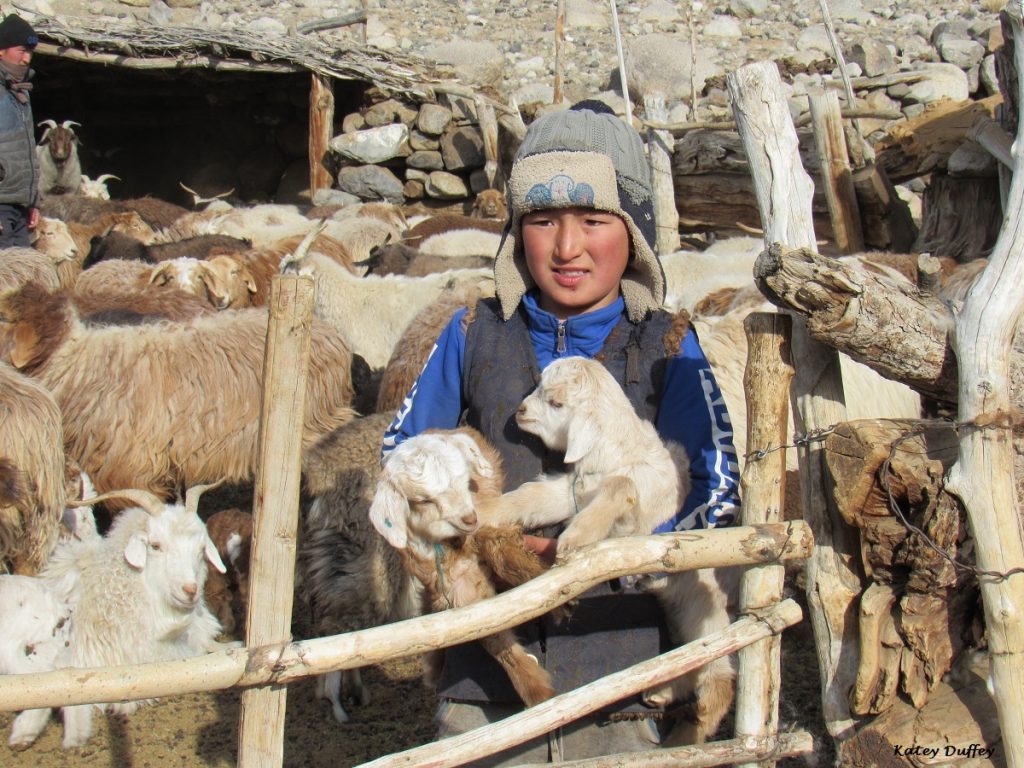
We have defined a program built on the foundation that local communities are at the heart of saving snow leopards.
Unifying People and Snow Leopards
When snow leopards kill livestock, a cycle of human-wildlife conflict is launched. We are working hard to mitigate this conflict, which currently involves many thousands of households from the Himalaya to Siberia.
Expanding Empathy and Conservation Through Learning
Together with our partners, we are working to increase comprehension of ecosystems, empowering the next generation of snow leopard champions, and providing guidance to communities living with snow leopards.
Empowering Indigenous Traditional Knowledge
We are building a coalition of Indigenous Cultural Practitioners (ICPs) who live and work in snow leopard habitat. Land of Snow Leopard Network has over 100 members who are reviving traditional knowledge within their communities and reigniting the sacred power of the snow leopard.
Connecting Communities for Conservation
Building Resilient Mountain Communities
With Diversified Livelihoods
We are facilitating the development of livelihood enterprises and incentives paired with snow leopard conservation, hoping to build robust, sustainable communities that will be the stewards for snow leopards and biodiversity.
Exploring Innovations in
Conservation Research
For the advancement of snow leopard conservation, we are pioneering new techniques such as Foxlights®, artificially intelligent camera traps, thermal drones, GIS habitat modeling, and genetics.
People and snow leopards share the rugged mountain landscape. Conflict arises when livestock losses are incurred due to depredation by carnivores.

Photo Courtesy of Katey Duffey
Our Lights for Life program distributes Foxlight® predator deterrents to discourage wolves and snow leopards from attacking livestock. These solar-powered units are placed at nighttime corrals where the random light patterns simulate human activity which frightens carnivores away.

Photo Courtesy of Katey Duffey
Another method of protecting carnivores as well as livestock is building predator-proof corrals. Traditional corrals are built to keep livestock in, not to keep predators out. Building enclosures with strong walls and a sturdy roof will prevent a snow leopard or wolf from entering the nighttime corral and killing the livestock.

Photo Courtesy of Steve Winter
To reduce the economic impact of depredation, we work with local communities to explore alternative sources of income. Himalayan Homestays enable travelers to experience a cultural exploration while providing income for the communities that live among snow leopards.

Photo Courtesy of B. Sharaf
Creating awareness of the snow leopard’s ecological as well as cultural and spiritual importance is a necessary step in its preservation. Community members are engaged and informed through International Snow Leopard Day festivals, radio programs, social media channels, and literary publications like The Snow Leopard magazine.

Photo Courtesy of Lyubov Ivashkina
The Conservancy’s conservation education programs provide a variety of opportunities for learning. Our partners facilitate traditional instruction in conservation education and bring unique programs to both girls and boys living in remote areas. Environmental education is also offered to adult community residents, including the introduction of improved methods of animal husbandry and pasture management and new tools to better coexist with predators.

Photo Courtesy of LOSL Kyrgyzstan
This original 4×2′ thangka (traditional Buddhist sacred art) by artist Leslie Nguyen depicts two differing paradigms. The picture shows the “Valley of Harmony” at the top, and the “Valley of Conflicts” at bottom.

